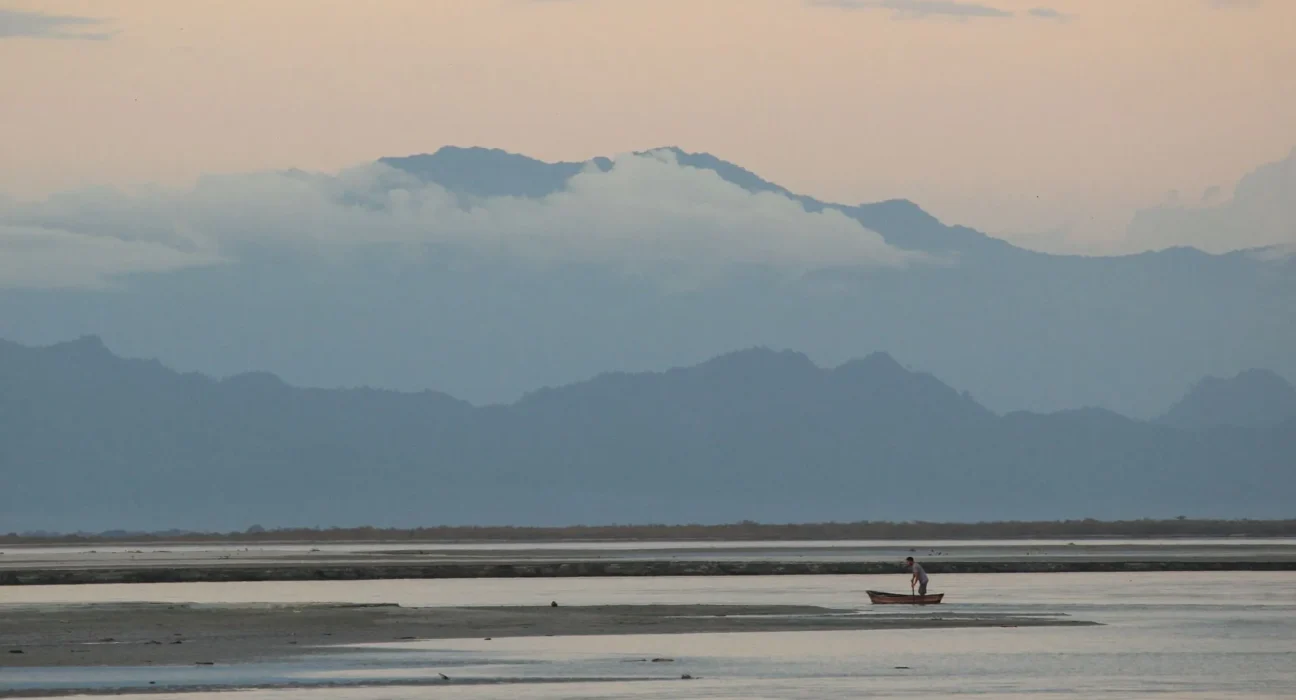- Even though there are many internal and external criticisms, IWT has managed to survive several wars and military standoffs between India and Pakistan.
- By hindering economic growth, the IWT has increased the domestic dispute over Kashmir. Kashmiris have grievances against the pact since it forbids India from using the western rivers for cultivation, hydroelectric generation, or navigation.
- The scientific community in India emphasizes the need for additional research and evaluations as a basis for debates on transboundary water management in the country.
- The treaty offers outdated technical guidance that is unable to address the ongoing technological disputes with Indus.
- The IWT is a permanent agreement that has no expiration date, in contrast to treaties like the 1964 Columbia River Treaty between the US and Canada, which allows either of its signatories to choose to renegotiate it after 50 years.
Heading
Brahmaputra basin part in India spreads over states of Arunachal Pradesh, Assam, West Bengal, Meghalaya, Nagaland and the whole of Sikkim. Brahmaputra basin (in India) is bounded by the Himalayas on the north, by the Patkai range of hills on the east running along the India-Myanmar border, by the Assam range of hills on the south and by the Himalayas and the ridge separating it from Ganga basin on the west. The distribution of the drainage area of Brahmaputra River in the states of Arunachal Pradesh, Assam, West Bengal, Meghalaya, Nagaland, and Sikkim are 81,424Sq.km, 70,634Sq.km,12,585Sq.km, 11,667 Sq.km, 10,803 Sq.km and 7,300Sq.km respectively.
Of all the hydropower in India, total of 31012 MW potential at 60% load factor is in the Brahmaputra region. In this case, Arunachal Pradesh alone has 67.5% (44 593 MW) of hydropower in the Brahmaputra valley. According to state data, the largest hydropower available in Arunachal Pradesh is about 30% (44,593 MW) of total hydropower in the country followed by Himachal Pradesh 13.6% (19411 MW).
The share of hydropower in our country has continued to decline since 1963. The water supply dropped from 50% in 1963 to about 25% in 2010. (Rahaman 2019). However, progress is far from satisfactory.
Status of Hydro Electric Power Potential Development – Brahmaputra | ||||
Identified capacity as per assessment study | Capacity Under Operation | Capacity under construction | Capacity under-operation + under-construction | Capacity yet to be taken up under Construction |
66065 | 2120 | 5736 | 7856 | 57544 |
Hydropower has made a significant come back in India, after the World Commission on Dams (WCD) and environmentalists had almost convinced governments to stop dams or more specifically in terms of engineering and infrastructure approaches to river management. There is 4413 square km of drainage area in India or almost 5.9% of the country’s total geographical area. The Brahmaputra has an average width of 5.46 km, and its maximum discharge at Pandu near Guwahati was 72,779 cumec and its minimum discharge was 1757 cumec. The average annual discharge is about 20,000 cumec, and the average dry season discharge is 4,420 cumec. Although recently, the Government of India (Department of Energy) has identified about 226 high-density areas in rivers in north-eastern India, most of which are located in the Brahmaputra region.

Salient features of the basin

State wise Basin area
The Brahmaputra basin is divided into 5 catchments and their numbers are assigned from 501 to 505by IMD. Catchment 326 is other than Brahmaputra basin in the Northeast region.

Catchments of the Brahmaputra Basin, CWC
The catchment area of Brahmaputra River in India, receives a number of tributaries at its north and south banks. Crop fields, extensive forest cover, tea plantations, grazing land and water-logged swampy areas with a huge network of tributaries are commonly observed components of the land use/cover of the Brahmaputra basin. The major part of basin is covered with forest accounting to 55.48% of the total area. The most predominant soil type found in the basin is the red loamy soil and alluvial soil. Other important soil types are sandy, loamy, clayey soils, their combinations and laterite soils. The entire Brahmaputra basin falls in the Eastern Himalayan agro-climatic zone(Planning commission, 1989). Brahmaputra basin falls in 3 agro-ecological zones. Most of the upper Brahmaputra sub basin area falls in the ‘Warm per humid eco-region with brown and red hill soils. The Brahmaputra Valley area is dominating by ‘Hot subhumid (moist) to humid (inclusion of per humid) eco-regions with alluvial-derived soils. The lowermost part of the basin is falling in the ‘Warm per humid eco-region with red and lateritic soils’
As per international reports (ORF 2020) over the next 50 years (from 2020-21), approximately 99,256 MW of hydropower is expected to be generated in rivers in north-eastern India.
India’s North-eastern states, with their mountainous topography and perennial streams, have the largest hydropower potential in all of India. Together, Sikkim, Arunachal Pradesh, Assam, Meghalaya, Manipur, Mizoram, Nagaland and Tripura account for almost 40 percent[1] of the total hydropower potential of the country. Since the 1990s, the Government of India (GoI) has shown interest in exploring this potential as an energy source that is cleaner and more sustainable than traditional ones. Following the Northeast Business Summit in Mumbai in July 2002, the Northeast has frequently been called the “Future Powerhouse” of India.
Additionally, a secure supply of water is crucial to state stability and safety in many countries around the world. The direct and indirect effects of water stress, such as migration, food shortages, and general destabilization, transcend national boundaries. As water stress continues to increase in the coming years, it will become even more important to prioritize water resources in policy formulations at home and abroad and Dams can be a key to it.
Other than that Hydropower has immense benefits, these are as follows:
- Hydropower is sustainable source of energy.
- India spends a lot of foreign exchange on energy but hydropower does not incur extra foreign exchange costs.
- There is no inflation with hydropower since it uses water as a ‘raw material’ at no cost.
- Hydropower is environmentally friendly, and the development of project sites promotes socio-economic growth in remote areas.
- In long-term it is very cost effective and renewable form of energy, while providing additional benefits like irrigation, flood control, tourism, transportation etc
While building large dams to harness hydroelectric power has certain benefits, the current paradigm, which neglects environmental issues, can have disastrous consequences and is fast becoming outdated.
To ensure project viability, all possible hidden costs—including those of losing ecosystem services—must be factored into the projected cost of a plant before national resources are allotted. The time overrun of the current hydropower projects in the Northeast is an important reminder of the importance of ecological and human issues, which must not be neglected in favour of quick benefits. In addition to traditional EIAs, detailed studies should be carried out regarding possible geological issues that might arise during the project. Further, rehabilitation and resettlement processes should be transparent, and the people most likely to be affected should be involved from the start to avoid future feuds.

Ananya Malik
About Author
She is an associate at MRC. Her research involves geopolitical, social and ecological analysis of transboundary waters particularly Brahmaputra River. She is an alumnus of TERI where she did her masters in water science and governance. Her other research areas include climate risk, water security and carbon finance.


